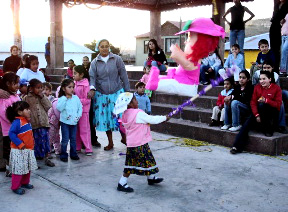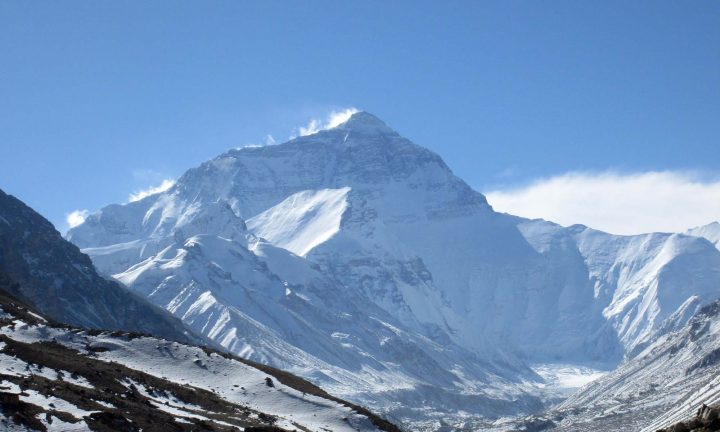We appreciate it when our guests share their stories with us and allow us to post them on our blog. Last month, Carman Cunningham and Lucile Griffiths, from San Rafael, California, traveled with us on our Copper Canyon 9-day Independent Tour to the Bottom and had this to report:
My friend, Lucile Griffiths, and I traveled to Copper Canyon, Mexico from December 23 to 31. We flew to Phoenix, Hermosillo, Los Mochis, then by taxi two hours to El Fuerte, Sinaloa. One of the few disappointments of the trip was that we arrived in El Fuerte after dark, and left before sunrise to catch the train. From the little we could see, El Fuerte is a beautiful colonial town and we wanted to see much more of it. Our hotel was a traditional hacienda with courtyards and gardens open to the sky, furnished with Persian rugs and antique furniture. Modern plumbing, though.
Our early morning train quickly climbed from farm land surrounding El Fuerte up into the mountains. By noon we were in the canyon lands, pine forests, ice and snow on canyon rims and mountain peaks. We had gone through 86 tunnels and crossed 37 bridges.

We got off the train at a little town called Bahuichivo and were met by a enthusiastic American, proprietor of the lodge where we stayed two nights. Although simple, the lodge was comfortable and the hospitality outstanding. We were swept into Christmas preparations and rituals. A pinata was stuffed, bags of sweets prepared for the area children who were expected, and a toy selected for each one. Doug’s family members (his wife is Mexican from the area) and Tarahumara Indians came and went, all excited.
In the late afternoon, we set off for the small village called Cerocahui, about 20 minutes drive from the lodge. Doug stopped to pick up all the people, most Indians, he met along the road. They overflowed the SUV, sat stacked on one another, smiling and silent. When we reached the village, we all congregated in the church.
When mass was over, the crowd walked around the central plaza stopping along the way to sing the song that asks for lodging (the posada) for Mary and Joseph. The householders sang back that there was “no room at the inn” until the last house where they were welcomed to the manger. After a pinata was battered open by the children and the sweets distributed (they made sure the only foreigners, Lucile and me, received a share) we went back to the lodge.
Two twenty five pound turkeys were put on to roast, but it became obvious that the American Christmas dinner tradition was unclear at best. And so it was that I made gravy for 120 people. The poor turkeys were not so much carved as torn apart and served with instant mashed potatoes and canned corn. The following day, I even introduced them to the old Dresden tradition, carcass soup. The children lined up for their presents, and the Indian women lined up to receive a blanket each. At this point Lucile I gave up and went to bed, but most people returned to the village for another mass and dancing. We were told they got to bed around 2:30 am.
The following (Christmas) day we boarded the train again and traveled to a town called Creel. Creel is 8000′ and pretty cold, patches of ice and snow crunched underfoot. The landscape was similar to the High Sierra, but I gather the biodiversity is much greater; more species of pine trees, oaks and other plants. Rock formations, caves and waterfalls are found all around the countryside. Some Tarahumara live in the caves. Many houses are built of logs and rock looking like the Lincoln log buildings we made as children. Men on horseback on unpaved roads add to the Far Western look of the area. The hotel is also built of rock and log. It could have been in Montana.
With the exception of one group of men in the bar one night, and one Canadian, we were the only foreigners we saw the whole trip. The hotel was full, but all the guests were Mexican. It was fun to see middle class Mexican families enjoying their Christmas holidays. And they were so polite and gracious with us. Perhaps the novelty of seeing two elderly American women traveling alone was the reason, perhaps they are just culturally different, but we were treated with utmost courtesy. I think the fact that I could speak (basic, I’ve forgotten a lot) Spanish had something to do with it, too. A lot of people remarked on my efforts.
From Creel, we were supposed to travel seven hours down to the canyon floor to spend a day in a town called Batopilas. However, about two days previously there had been a storm, the town was partially destroyed and the roads washed out. We were advised not to go. So, we missed Batopilas. Our driver had some ideas, and it turned out that we spent the next three days in the area and saw some interesting sights. The first day (which would have been the day of the descent) we saw the Valleys of the Mushrooms, the Frogs and the Monks (all rock formations), cave dwellers, and had a picnic by the side of a mountain stream.
The second day we went to a resort town called Divisadero and took a thrilling cable car–finicular-teleferique trip across a section of the canyon. We could see into the depths, thousands of feet below, sheer rock walls all around us. Copper Canyon is six times larger than the Grand Canyon! We had lunch in a market set up along the train track after that. I should tell you that neither of us had any stomach trouble at all on the trip. The third day (which would have been the ascent) we went to a very old village and as it was Sunday, attended mass in an attractive old church. We were amused when one of the “hymns” was Jingle Bells.
Prior to our departure on this trip several people expressed concern about our safety. We never saw any evidence of danger, nor sensed tension. As I mentioned previously, aside from the one group of men in a bar, and one Canadian, we did not see any people other than Mexicans. Surely tourism is suffering and it is too bad. The trains were guarded, that is, two armed soldiers walked up and down the aisles from time to time. We saw several armed vehicles on the road, filled with soldiers, presumably on patrol. That was all. No one looked the least bit intimidated, or even interested in them.
On the way up to Creel there were few passengers on the train. On the way down, the train was very crowded. In order to get from our seat to the dining car we had to go through the bar. It was packed with revelers, singing, dancing and drinking. They treated us like delicate eggs, as the train swayed and rocked and jumped, they handed us along, person to person, with welcoming smiles and greetings. When we got to the dining car, they put us at the head of the line to be seated.
We traveled home on the 31st the way we came: El Fuerte, Los Mochis, Hermosillo, Phoenix, San Francisco. Again the frustration at not seeing El Fuerte. Despite that, we had a wonderful time. To a future traveller, I would recommend stocking up on 5 and 10 peso pieces for tips and Indian children. Our 20 peso notes were too big.
A trip to Copper Canyon is one that I would recommend without hesitation. Beautiful scenery, friendly people, comfortable train and hotels. It doesn’t get much better than that.
